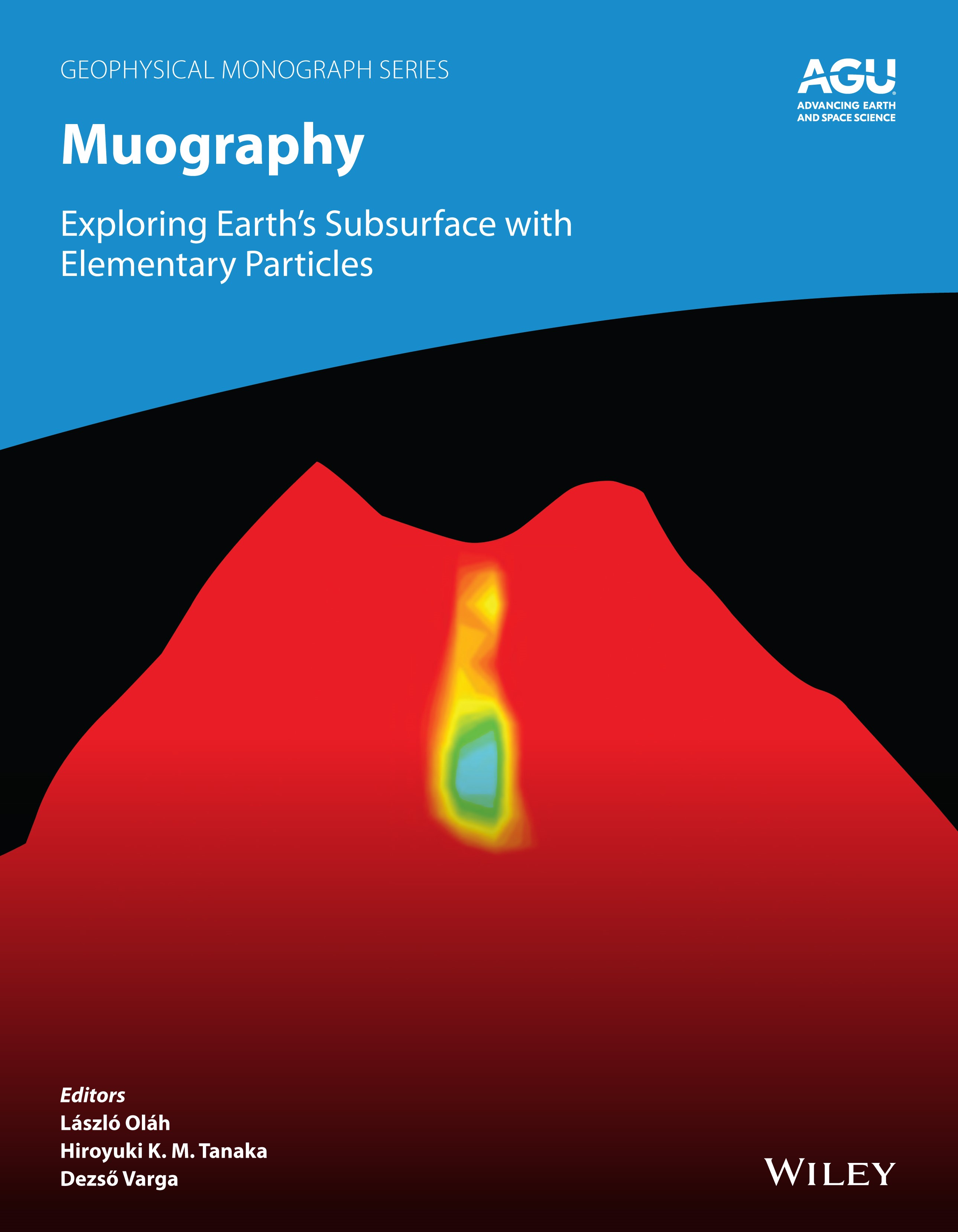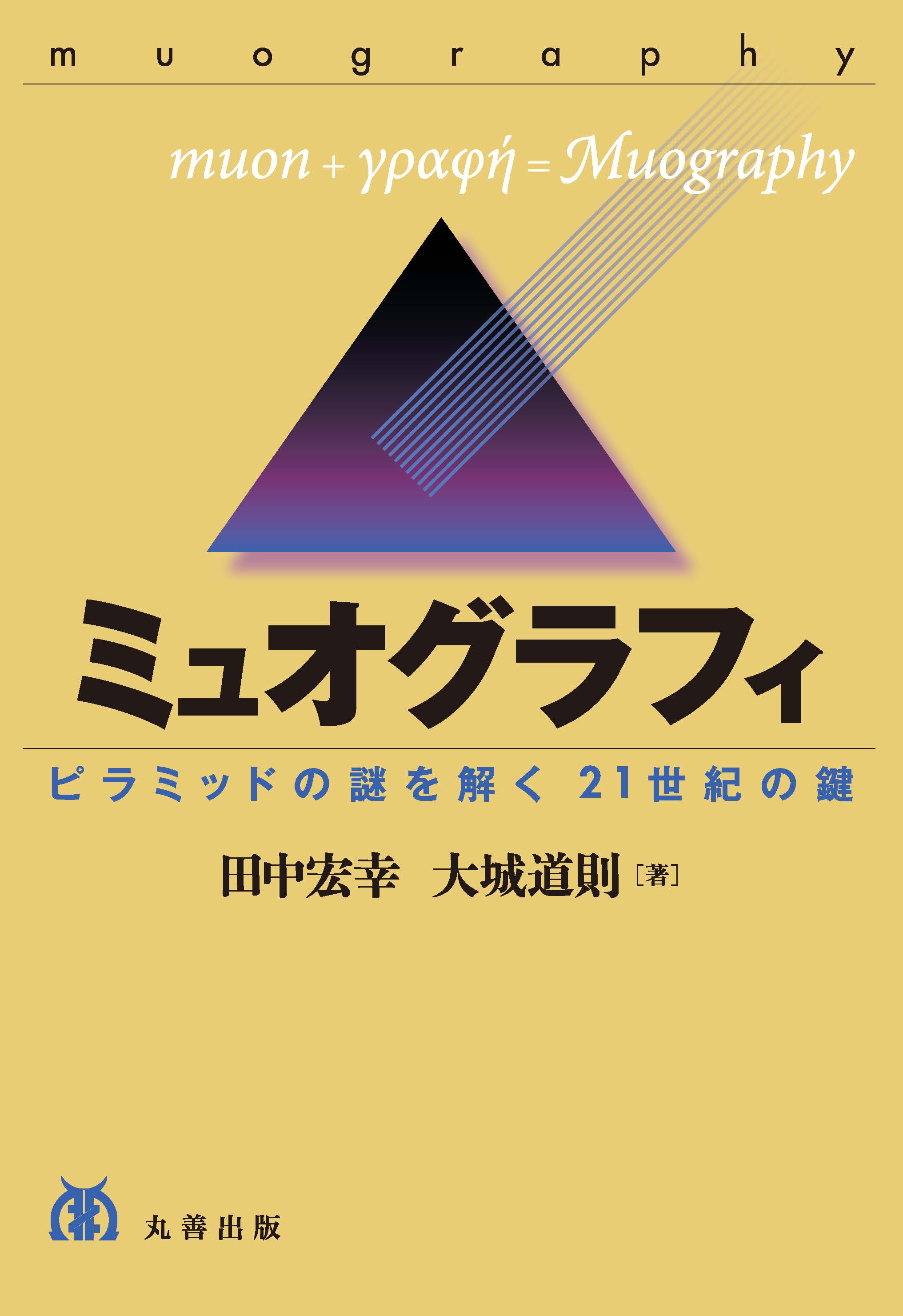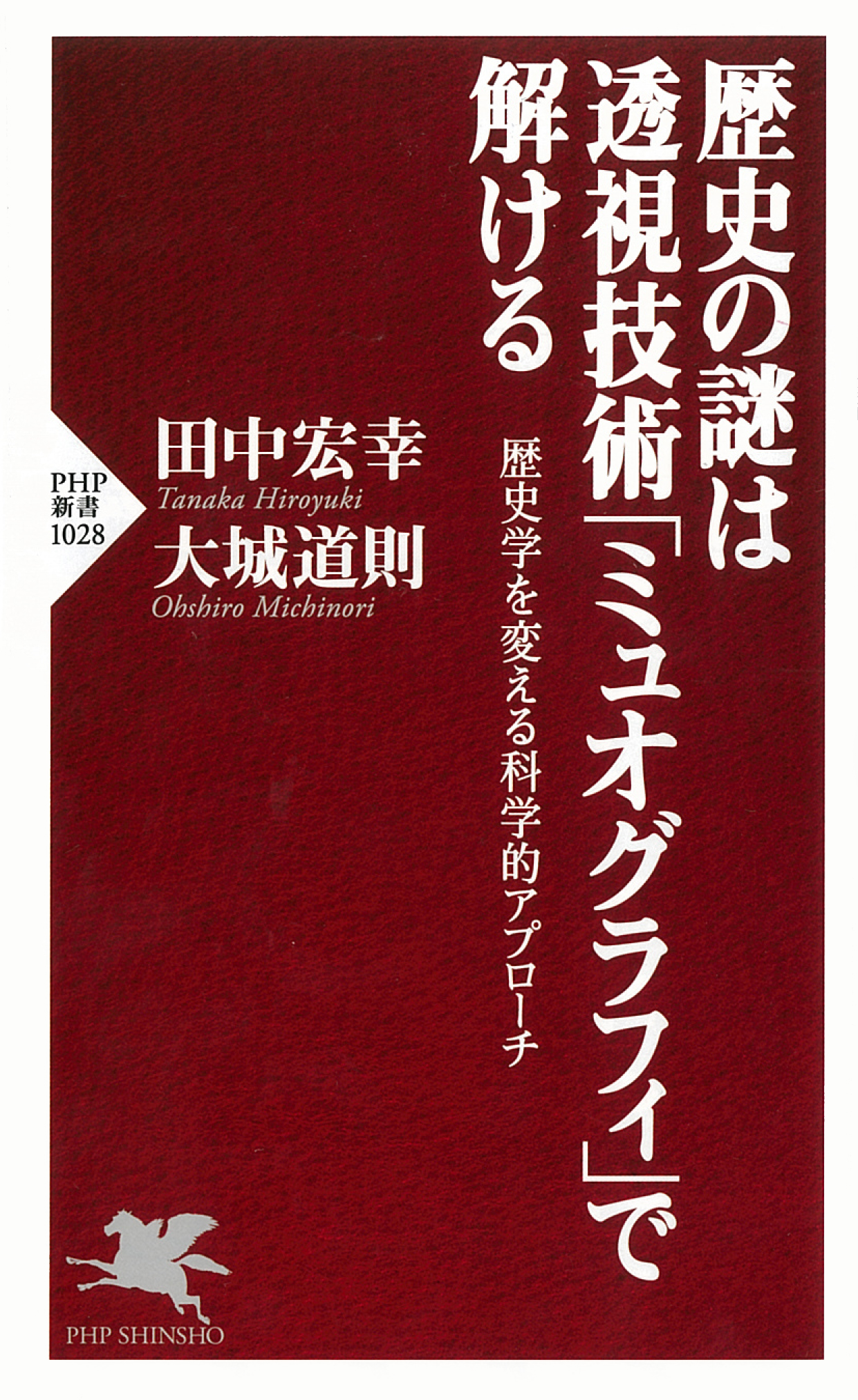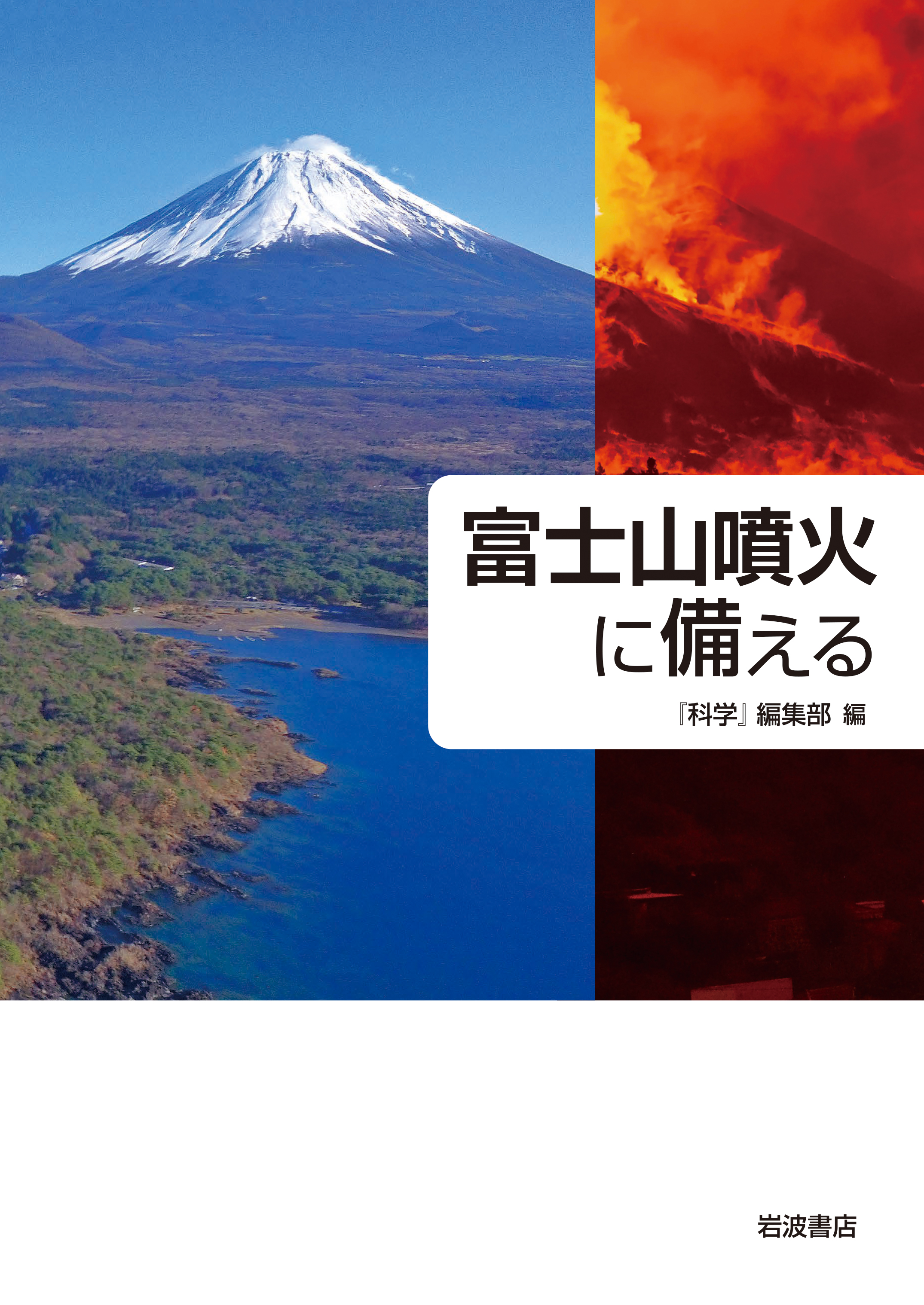
Title
Geophysical monograph 270 Muography Exploring Earth's Subsurface with Elementary Particles
Size
320 pages, hardcover
Language
English
Released
March, 2022
ISBN
978-1-119-72302-8
Published by
American Geophysical Union / John Wiley and Sons, Inc.
Book Info
See Book Availability at Library
Japanese Page
This new book describes muography, an imaging technique that can be used to visualize the internal density composition of geological structures. In a broad sense, muography is an academic field that targets the use of muons as elementary particles in nature, society, and culture. In a narrow sense, it is mainly used for radiographic applications as an imaging technique to visualize the internal structure of large objects by utilizing the strong penetrability of high-energy muons originated from cosmic rays. By the 1950s at the latest, this imaging technique was proposed as a method for measuring rock density, but more than 50 years later, the inside of a volcano was imaged for the first time. In 2017, a new void structure was discovered inside the Pyramid of Khufu, Egypt. Muography was named in 2009, and now covers not only imaging technology but also a wider range of fields such as positioning technology, time synchronization technology, and communication technology. Of these, this book focuses on imaging techniques and geoscientific targets.
Cosmic-ray muons have the following seven characteristics.
(1) Strong penetrability (through kilometers of rock),
(2) Straight traveling path lines regardless of the substance traveled through,
(3) Almost constant flux regardless of the season or time of day,
(4) Ubiquitous precipitation throughout the entire planetary surface,
(5) Consist traveling speed at almost the speed of light in a vacuum.
(6) True random number nature of the arrival time, and
(7) Multiple generation near the tropopause
Hidden out of sight in the Earth’s subsurface are a range of geophysical structures, processes, and material movements. The imaging technique, which is explained in detail in this book, uses the features of (1) to (4). Muography is a passive and non-destructive remote sensing technique that allows the visualization of the internal structure of solid geological structures at high resolution, similar to X-ray radiography in human bodies. “Muography: Exploring Earth's Subsurface with Elementary Particles” explores the application of this imaging technique in the geoscience research and how it can complement conventional geophysical observations.
Volume highlights include:
Principles of muography and pioneering works in the field Different approaches for muographic image processing Observing volcanic structures and activity with muography Using muography for geophysical exploration and mining engineering Potential environmental applications of muography Latest technological developments in muography.
(Written by TANAKA Hiroyuki, Professor, Earthquake Research Institute / 2022)
Table of Contents
Hiroyuki K.M Tanaka
Part I: Muographic Image Processing
2 Tomographic Imaging of Volcano Structures with Cosmic-ray Muons
Seigo Miyamoto and Shogo Nagahara
3 Joint Inversion of Muography and Gravity Data for 3D Density Imaging of Volcanoes
Ryuichi Nishiyama
4 Machine Learning with Muographic Images as Input: an Application to Volcano Eruption Forecasting
László Oláh and Hiroyuki K M Tanaka
Part II: Muography for Volcanic Investigations
5 Observation of the Dynamics of Hydrothermal Activity in La Soufrière of Guadeloupe Volcano with Joint Muography, Gravimetry, Electrical Resistivity Tomography, Seismic and Temperature Monitoring
Dominique Gibert, Jean deBremond d’Ars, Bruno Carlus, Sébastien Deroussi, Jean-Christophe Ianigro, David Jessop, Kevin Jourde, Bruno Kergosien, Yves Le Gonidec, Nolwenn Lesparre, Jacques Marteau, Roberto Moretti, Florence Nicollin, and Marina Rosas-Carbajal
6 Structure of the Shallow Supply System at Stromboli Volcano through Integration of Muography, Digital Elevation Models, Seismicity, and Ground Deformation Data
Valeri Tioukov, Flora Giudicepietro, Giovanni Macedonio, Sonia Calvari, Federico Di Traglia, Alessandro Fornaciai, and Massimiliano Favalli
7 Three Years of Muography at Mount Etna: Results and Interpretation
Domenico Lo Presti, Giuseppe Gallo, Danilo Luigi Bonanno, Giovanni Bonanno, Carmelo Ferlito, Paola La Rocca, Santo Reito, Francesco Riggi, and Giuseppe Romeo
8 Muography of Magma Intrusion Beneath the Active Craters of Sakurajima Volcano
László Oláh and Hiroyuki K M Tanaka
9 Muography of the Volcanic Structure of the Summit of Vesuvius
Giovanni Macedonio, Giulio Saracino, Fabio Ambrosino, Guglielmo Baccani, Lorenzo Bonechi, Alan Bross, Massimo Bongi, Antonio Caputo, Roberto Ciaranfi, Luigi Cimmino, Vitaliano Ciulli, Raffaello D’Alessandro, Mariaelena D’Errico, Flora Giudicepietro, Sandro Gonzi, Vincenzo Masone, Nicola Mori, Pasquale Noli, Massimo Orazi, Giuseppe Passeggio, Rosario Peluso, Anna Pla-Dalmau, Giovanni Scarpato, Paolo Strolin, Enrico Vertechi, and Lorenzo Viliani
Part III: Muography for Environmental Applications
10 Water Resource Management: The Multi-technique Approach of the Low Background Noise Underground Research Laboratory of Rustrel, France, and its Muon Detection Projects
Ignacio Lázaro Roche, Sylvain Pasquet, Konstantinos Chalikakis, Naomi Mazzilli, Marina Rosas-Carbajal, Jean-Baptiste Decitre, Leїla Serene, Christelle Batiot-Guilhe, Christophe Emblanch, Jacques Marteau, and Stéphane Gaffet
11 Exploration of Underground Cave Systems with Muography
Gerg Hamar, Gergely Surányi, László Oláh, and Dezs Varga
12 Detection and 3D Reconstruction of Cavities Inside Mt Echia, Naples IT
Giulio Saracino, Fabio Ambrosino, Guglielmo Baccani, Lorenzo Bonechi, Luigi Cimmino, Raffaello D’Alessandro, Mariaelena D’Errico, and Paolo Strolin
13 Exploration of Hidden Topography Beneath Alpine Glaciers with Muography
Paola Scampoli, Ryuichi Nishiyama, Akitaka Ariga, Tomoko Ariga, Antonio Ereditato, Alessandro Lechmann, David Mair, Ciro Pistillo, Fritz Schlunegger, and Mykhailo Vladymyrov
14 Muography, a Key Technology for Monitoring Carbon Geostorage
Lee F Thompson, Jon G Gluyas, Joel Klinger, Vitaly A Kudryavtsev, Darren L Lincoln, David Woodward, and Max L Coleman
15 Future Prospects of Muography for Geological Research and Geotechnical and Mining Engineering
Marko J Holma, Zongxian Zhang, Pasi Kuusiniemi, Kai Loo, and Timo Enqvist
16 Muon Tomography for Underground Resources
Douglas Schouten, Donald Furseth, and Jacobus van Nieuwkoop
Part IV: Next Generation Muography
17 Development of Scintillator-Based Muon Detectors for Muography
Jacques Marteau, Jean deBremond d’Ars, Bruno Carlus, Antoine Chevalier, Amélie Cohu, Thierry Descombes, Dominique Gibert, Jean-Christophe Ianigro, Kevin Jourde, Bruno Kergosien, Nolwenn Lesparre, Jean-Luc Montorio, and Marina Rosas-Carbajal
18 Resistive Plate Chambers in Muography
Andrea Giammanco, Sofia Andringa, Eduardo Cortina Gil, and Michael Tytgat
19 Development of Multi-Wire Proportional Chamber-based Trackers for Muography
Dezső Varga, Gergő Hamar, and László Oláh
20 Development of Micro-Pattern Gaseous Detectors for Muography
Simon Bouteille and Sébastien Procureur
21 Development of Nuclear Emulsions for Muography
Kunihiro Morishima, Nobuko Kitagawa, and Akira Nishio
Index
Related Info
www.muographix.u-tokyo.ac.jp
Blog article by authors:
High-Definition Imaging of the Subsurface with Cosmic Ray Muons (Eos Feb 14, 2022)
https://eos.org/editors-vox/high-definition-imaging-of-the-subsurface-with-cosmic-ray-muons
Review:
Reviewed by William Green (The Leading Edge Volume 41, Issue 12, p.806-884 Dec 2022)
https://doi.org/10.1190/tle41120879.1
Related article:
University Museum: Muography Perspective Drawing in the 21st Century (The University of Tokyo Jan 7, 2016)
https://www.u-tokyo.ac.jp/focus/en/articles/a_00447.html



 Find a book
Find a book


 eBook
eBook

